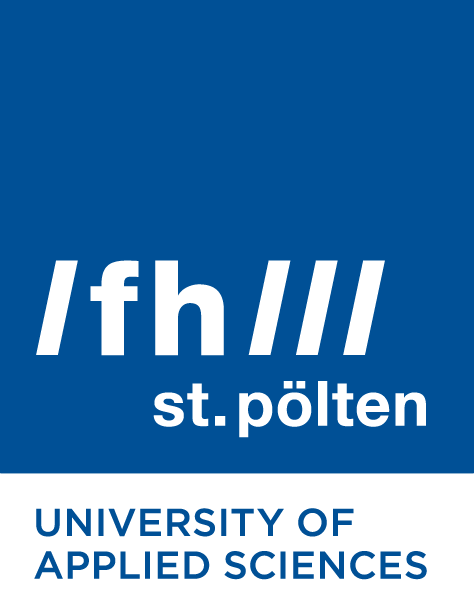Opening Concert
Tuesday, 6th September 2022 19:30 | Main Hall B
In cooperation with the St. Pölten Music School
Without the spatio-temporal expansion of sound, music cannot exist. This means that the acoustics of a room contribute significantly to the listening experience of music. The space for which a piece of music is composed thus becomes an instrument itself, a resonating body. Understandably, the relationship between music and architecture is evident throughout the entire history of music. There is the Venetian polychoral style of the Renaissance, which came to full bloom in the architecture of St. Mark‘s Cathedral. The delicate sonatas by Italian composer Domenico Scarlatti, written only a little later, also bear a spatial concept: They were composed for recitals in the royal chambers at the Spanish court. In recent music history, impressive connections between music and space can be found in the sprawling expanses of stadium rock, the cramped basement vaults of jazz concerts, and also in the heated energy of techno clubs. The space shapes the music and the music shapes the space. In this sense, every room has its own music that suits it.
Spacious and flooded with light, the entrance and interior area of the new campus building of the St. Pölten University of Applied Sciences, which was completed last year and extends over 4 fl oors, is perfect for musical exploration. Its openness and transparency are entirely in keeping with the vision of the university’s Strategy2025 which sees the “European University as an inspiring source of knowledge transfer and skills acquisition for all people who contribute to an inclusive and progressive society.” So, what is the “right” music for such a space? This is the question the concert will explore.
Opening & Introduction: Lukas Schönsgibl - Head of the St. Pölten Music School
Gerriet K. Sharma: critical mass (2015-16/2022) - for icosahedron loudspeaker and architecture
Michael Gordon: Timber (2009) - for percussion ensemble - STUDIO PERCUSSION graz
Susanne Fröhlich & Gerriet K. Sharma: Semaphor (2018) - room composition for Helder tenor recorder and icosahedron loudspeaker
About the artists
Anna Koch is an Austrian clarinet and bass clarinet player. As a professional musician, she specialises in contemporary music and improvised music. Studies in clarinet performance at the ‘University of Music and Performing Arts Vienna’, graduation with honours in 2017.
’Startstipendium Musik’ grant 2020 by the Austrian Federal Ministry for Arts and Culture. Premiere of her solo programme BASSticcio in January 2022. Selected artist for NASOM, the New Austrian Sound Of Music 2023/24.
Member of Platypus Ensemble, ensemble reconsil and ensemble N, frequent guest artist with Ensemble Kontrapunkte, Bang on a Can-All Stars, etc.. Collaboration with musicians and composers such as Petra Stump-Linshalm, Heinz-Peter Linshalm, Michael Jarrell, Ig Hennemann, Julia Wolfe, and Bruno Liberda as well as masterclasses with Matthias Schorn, Alexander Neubauer, Fie Schouten, and Harry Sparnaay.
Performances as a soloist and chamber musician at festivals like Wien modern, Bang on a Can (USA), Klangspuren Schwaz, Impulskonzerte Graz, Styriarte, Imago Dei and Expo Shanghai (2010).
The composer and sound artist Gerriet K. Sharma works mainly in the fi eld of compu-ter music and sound projection with loudspeaker instruments as well as hybrid forms of performance between installation sound art and concert. His works are presented at international festivals and on international stages. He regularly passes on his specialist knowledge in the fi eld of spatial sound projection and composition in international work-shops and master classes. He is a recipient of the “Deutscher Klangkunstpreis” and held the DAAD’s prestigious Edgard-Varèse Guest Professorship at the Electronic Studio of the TU Berlin in the academic year of 2017/18.
Susanne Fröhlich is a recorder player and dedicates herself to early music, contem-porary music, improvisation, and new concert formats. She gives concerts and holds workshops in Europe and abroad on a regular basis. As a former founding member of the recorder quartet QNG – Quartet New Generation, she performs both as a soloist and in various formations, as well as in several art and music theatre productions, including with Saâdane Afi f, Ari Benjamin Meyers, andcompany&Co, Constanza Macras/dorkypark, and Opera Lab Berlin. She has participated in numerous world premieres in world-renowned concert halls and festivals, including Ensemble Adapter, Collegium Novum, Figura Ensem-ble, Ictus Ensemble, Neue Vokalsolisten, and Trickster Orchestra.
Michael Gordon was born in Florida in 1956. The composer and co-founder of the le-gendary ensemble Bang on a Can is one of the pioneers of post-minimalism and totalism of the 1980s and 90s. His work is infl uenced by both New York underground rock and by his academic studies in composition.
Founded in 1979 by Günter Meinhart, the ensemble STUDIO PERCUSSION graz has brought a considerable number of the most diverse productions to a wide variety of stages in Austria and abroad over the past 35 years. Exciting projects in the contemporary field, cross-border cooperation with musicians, composers, and organisers in the field of jazz and classical music, special children‘s and youth programmes, and the passion for its own music theatre productions have shaped and characterised the work of the ensemble.
The performing artists are: Günther Meinhardt, Lukas Kleemair, Bernhard Richter, Johan-nes Ebner, Sebastian Baumgartner and Grilli Pollheimer
